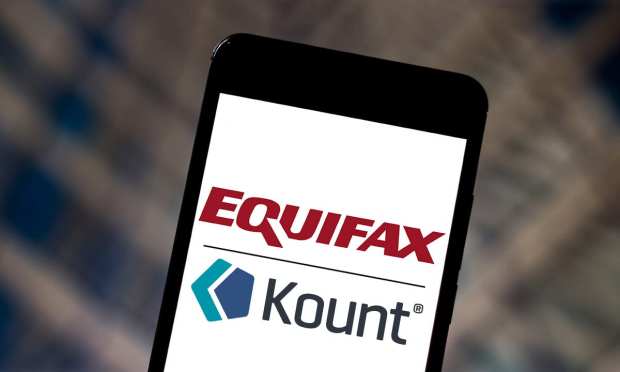Equifax Acquisition Gives Kount Window Into Digital ID Space

For the last year, change has become the only consistent norm in the environment, and many firms in the payments and commerce business found themselves doing very different things at the start of 2021 than they had ever considered doing in the past.
But the change that came for the team at artificial intelligence (AI)-based fraud prevention firm Kount was big, even by recent standards, as the firm announced it was to be acquired by consumer credit reporting giant Equifax in a $640 million deal that closed in February.
It was big news, Kount Senior Vice President and General Manager Brad Wiskirchen told Karen Webster, but it did not necessarily bring big changes. Kount is still based in Boise and still pursuing the same roadmap it was pre-acquisition. The biggest change to Kount is the massive influx of data it now has to work with and build from, and how many more opportunities approaching the market as a segment of Equifax opens up for the company.
As Wiskirchen told Webster, the acquisition basically expands Kount’s global footprint into the digital identity space, which is so critical given the rise of the digital-first economy. As the pandemic drove customer interactions to the digital environment, financial institutions (FIs) had insightful information on the basics of the physical world: mortgage, car and income.
“Kount has the complete picture of the customer in the digital environment,” he said. “Combine those two things, and it’s like peanut butter and chocolate — you put them together and you’ve got the perfect combination.”
It’s a combination that will open up doors to building eCommerce experiences that are safer, more friction-free and better designed to point consumers in the direction of relevant offers and recommendations for their digital journeys, he said. Fighting fraud is a guiding principle for Kount and always will be. But the purview and scope of its mission has grown quite a bit wider. Now Kount will be finding ways to bring the underserved consumer into the mainstream financial system and to help merchants understand consumer interests and behaviors so they can build more relevant offers.
“There’s all kinds of things you can do when you have data, and it’s exciting to see what we’re going to be able to do together,” Wiskirchen said.
Bad Guy IQ
The market is becoming an incredibly complicated and fast-moving space — one where fighting fraudsters while crafting more relevant consumer offers is a very tall order for merchants to pull off, he said. That’s because the bad guys are smart. They’re equipped with the best technology they can get their hands on and ready to go to work on any new innovation — usually one or two steps ahead of regulators and everybody else in the game.
And there is no magical solution that will keep the fraudsters away. He said buzz words like “distributed ledger” don’t magically ward off attempts at fraud so much as they inspire fraudster to think creatively about turning it to their advantage.
For his part, Wiskirchen said he assumes that all of his data has already been compromised and is for sale on the dark web. That motivates him, and should motivate consumers, to stop fraudsters from striking at their identity. From Kount’s perspective, fighting fraud right usually entails being prepared with data to see the customer clearly enough to begin fighting fraud from the word go.
“We have found getting the identity right up front at the beginning of the transaction works,” he said. “It means moving it from the end of the commercial interaction to the beginning between an end consumer and the merchant, or an end consumer and their bank. That way you never let [fraudsters] in, you never let them start down the path collecting and creating additional data and processes.”
And what starts at the front door can’t end there. The new future of consumer safety and convenience is continuously monitoring the customer as they proceed. It’s not about the single digital interaction and heading off the chargeback. Wiskirchen said it’s about protecting every step of every transaction, the “basic blocking and tackling” to provide consumers with a trustworthy digital commerce experience.
And getting there requires organizations to break down elements like loyalty, payments and consumer experience that don’t meaningfully share data with each other, he said. Those siloes have to be removed in favor of centralization for firms that are serious about evolving into the digital era. Without a holistic solution that can see every part of every digital iteration with the consumer, merchants are simply deciding to sit out the opportunities that are going to define the next generation of increasingly connected, omnicommerce retail.
“I think the next five years are going to show more innovation and excitement — not just in the fraud control side, but in enabling merchants’ platforms to provide so much less friction to consumers,” he said. “If you’re not omnichannel ready, if you’re not digital ready, and if you’re still concentrating exclusively on brick and mortar, then I think you may be selling a buggy whip when Ford’s about to launch the Model T.”